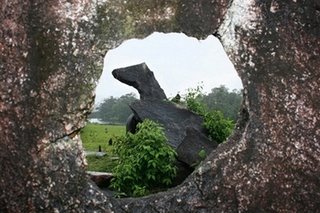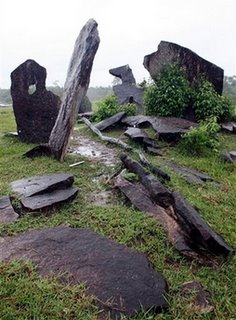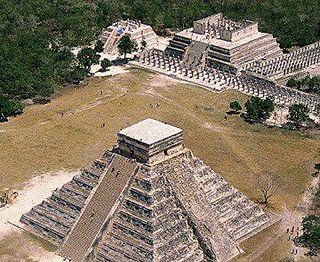The AP reports of a rather unusual finding in the Amazon in the form of a centuries-old astronomical observatory similar to that of Stonehenge. The discovery adds to the mysterious nature of the Amazonia Rainforest inhabitants and also to the unusual sophistication of early cultures in the new world like the Mayans and Incas.
The finding unearths blocks of granite lined up to match the seasons and the stars. On December 21, the shortest day of the year, "the shadow of one of the blocks disappears when the sun is directly above it." The importance of the blocks indicates the relations of the inhabitants to their environment and the creation of a seasonal calendar. Knowing the seasons and the changes in the environment is crucial to agriculture and other lifestyles. The Mayans at Chichen Itza created the temples below to reflect similar seasonal displays.
Chichen Itzu Temples
The main temple above, the Temple of Kukulcan or El Castillo, is aligned with the fall and spring equinox and forms a visual calendar by creating a shadow on the stairs in the shape of a serpent's tail. The head, located at the base of the stairs (one for each day of the year), has a 'shadow' tail created by the seasons that grows and shrinks with the seasons. When it hits the bottom, the winter is there and at it's length the spring equinox is in full.
Serpent's head





No comments:
Post a Comment